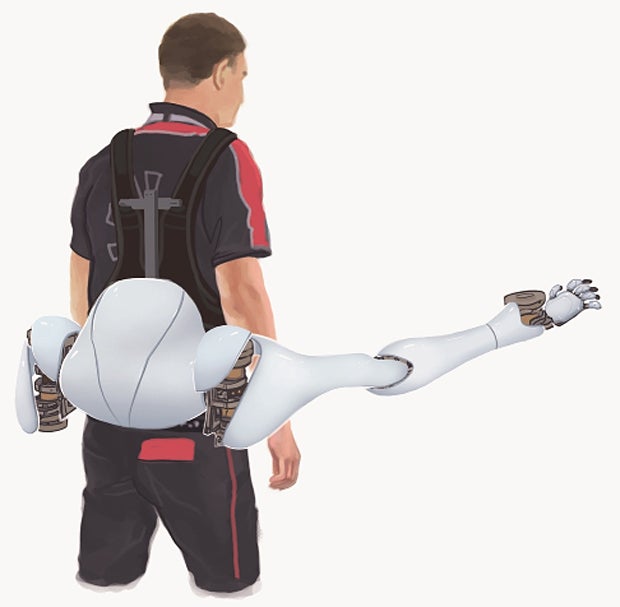Need a hand? Strap on a pair of robotic arms
Working prototypes built by MIT engineers show 'Supernumerary Robotic Limbs' being used to help construction workers

While most research into robotic limbs focuses on replacing lost arms or legs, a group of engineers from MIT have imagined a future where anyone can strap on an extra pair of arms when they need a helping hand. Their creations are known as SRLs – or Supernumerary Robotic Limbs.
“Imagine that one day humans will have a third arm and a third leg attached to their body,” writes the team from the d'Arbeloff Laboratory for Information Systems and Technology. “The extra limbs will help them hold objects, support the human body, share a workload, and streamline the execution of a task.”
“If the movements of such supernumerary limbs are tightly coupled and coordinated with their arms, the human users may come to perceive the extra limbs as an extension of their own body. The goal of our work is to build a co-robot that becomes a functional extension of the human body."
Current prototypes for supernumerary limbs weigh just 4.5kg (10lbs), strapping around the waist and shoulders like a backpack while the robotic arms reach over the users’ shoulders. Videos show them being used in construction-like situations (Boeing has been sponsoring some of the research, wanting to protect their aging workforce from injury) with the limbs holding up a sheet of material to the ceiling while the wearer screws it in place.
Researchers in the same lab are working on a similar rig where the arms are placed at waist height (see picture above) allowing them to brace the wearer against either the floor or a facing wall. The latter could be useful when using, say, a powerful drill – although the researchers have suggested more mundane functions such as opening a door when the wearers’ hands are full.
The difficulty for engineering the arms is of course getting them to do what the user wants intuitively. Current prototypes simply mimic what the user is doing by monitoring to sensors worn the wrist, but researchers say they’re testing different “behavioural modes” to make the limbs more helpful. As long as there's not one labelled 'comic book supervillain'.
Join our commenting forum
Join thought-provoking conversations, follow other Independent readers and see their replies
Comments